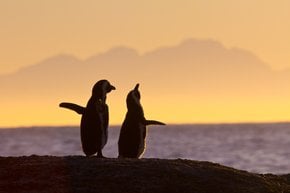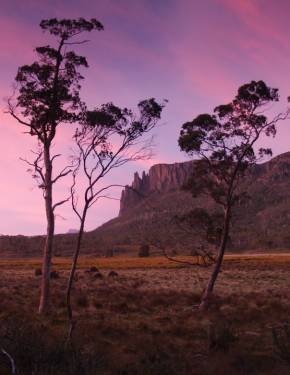Hoiho–Yellow-Eyed Penguin in New Zealand 2025-2026
Unique appearance of a yellow-eyed penguin hoiho cannot be confused with any other species, even during moulting
Best time: November–early April
A yellow-eyed penguin hōiho is the largest and the heaviest New Zealand's penguin. Besides the eyes' colour, its typical features include a stripe of pale yellow feathers on the nape and around the eyes, a yellow-spotted black chin, cheeks and forecrown, fawn-brown sides of the head and the foreneck, a nice long red-brown and creamy bill, and finally pink and black-brown feet. The back and tail are traditionally stale-blue and the front is white. This unusual colouration makes it impossible to confuse the species with any other species of penguin, even when the birds moult. Besides, it might be difficult to tell the sexes, as they look quite alike, except size only: males are a bit bigger than females.
If you want to view yellow-eyed penguins, the best time is breeding season, that stretches from November through February, March or April. They prepare the nests in densely vegetated areas, concealing their nursery sites behind lush leaves. What is interesting - both sexes incubate the eggs.
Their habitats are located only in New Zealand, being spread along the south-east South Island and on Banks Peninsula, on Stewart Island and its outliers, Codfish Island, the Auckland Islands, and Campbell Island.


































